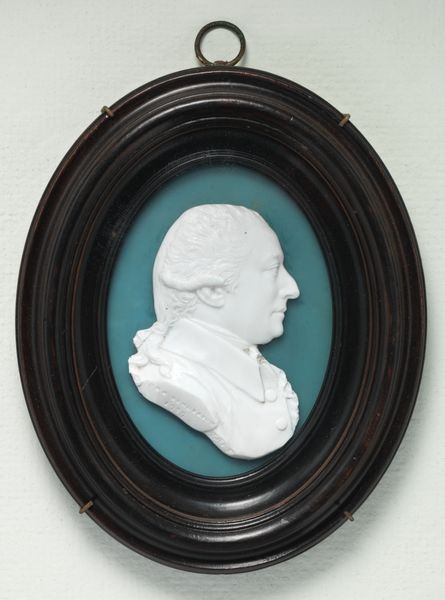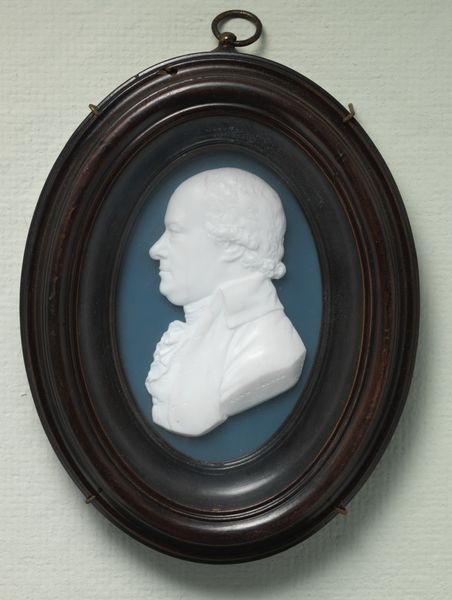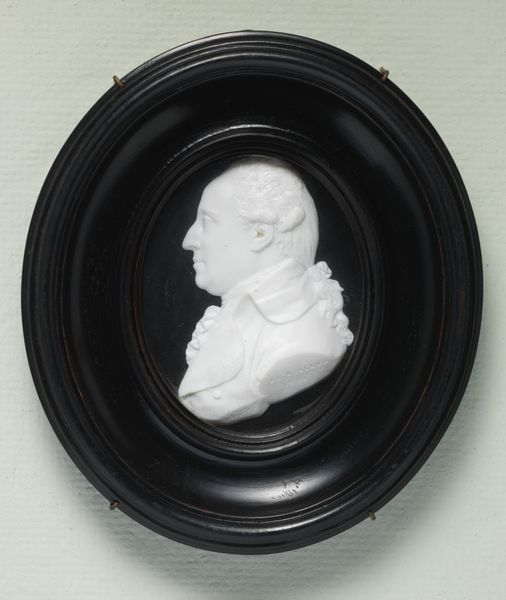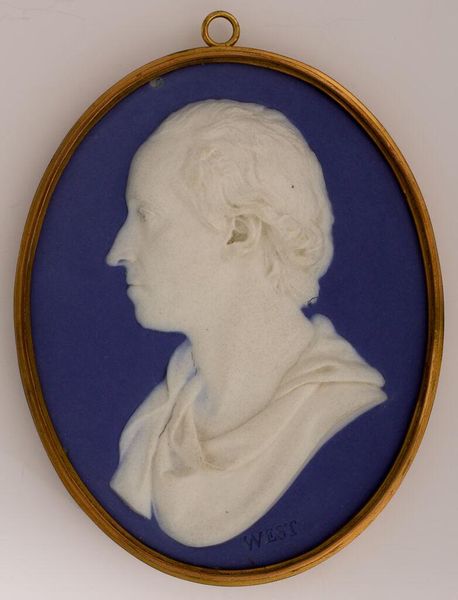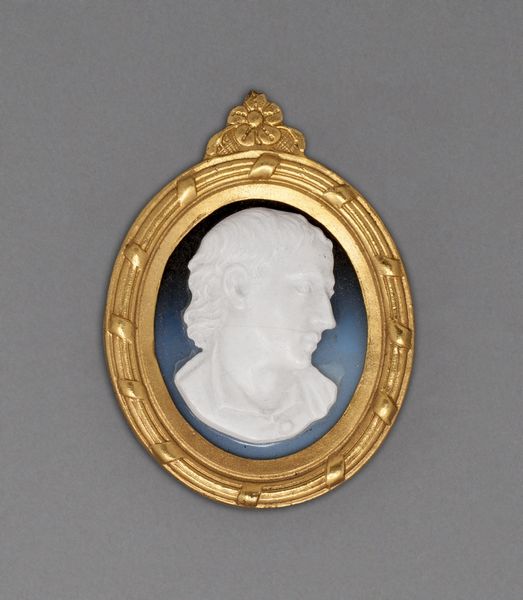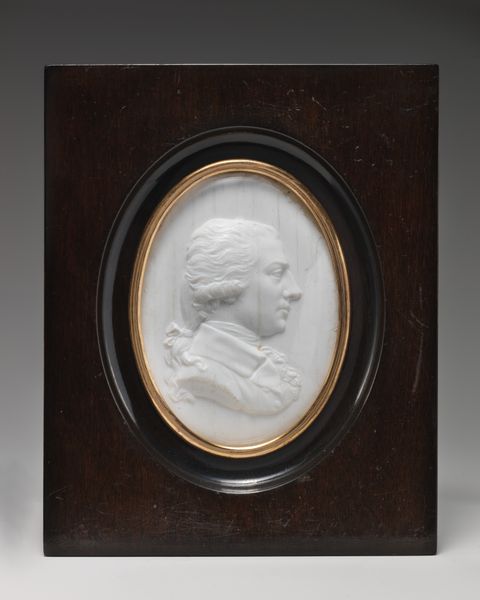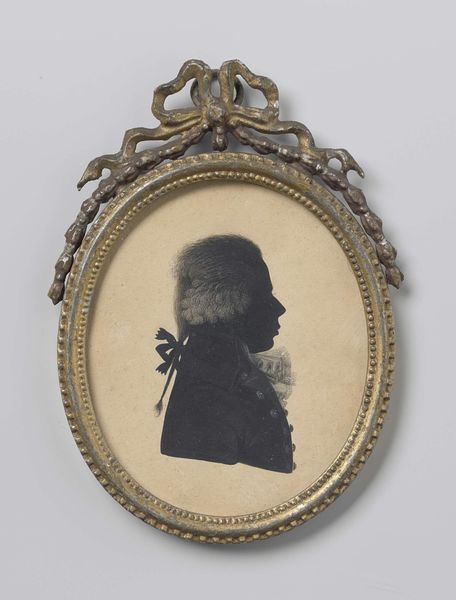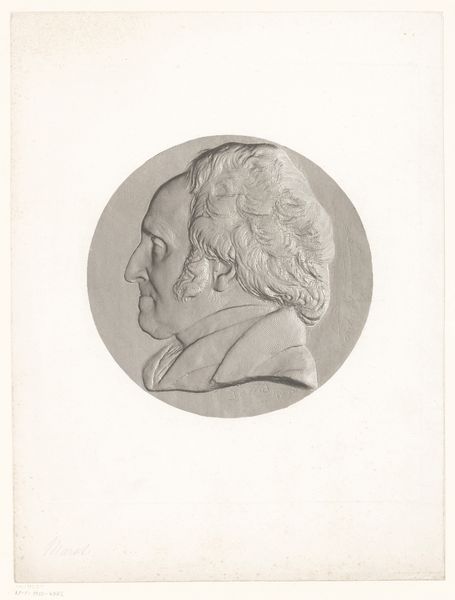
carving, sculpture, marble
#
portrait
#
neoclacissism
#
carving
#
sculpture
#
sculpture
#
men
#
earthenware
#
watercolour illustration
#
decorative-art
#
marble
Dimensions: Framed: 6 3/4 × 5 3/4 in. (17.1 × 14.6 cm)
Copyright: Public Domain
Curator: Here we have a marble carving of General Lafayette dating back to the 19th century. It is currently held here at the Metropolitan Museum of Art. Editor: My initial reaction is that this portrait, framed as it is against that deep red velvet, feels surprisingly intimate. There is almost something vulnerable about its presentation. Curator: Indeed. The choice of marble gives it a classical, almost Neoclassical feel. Remember, Lafayette was a hero of both the American and French Revolutions. These kinds of commemorative carvings served to immortalize figures like him. Think about the circulation of imagery and its function during periods of major upheaval, too. Editor: That is fascinating! I cannot help but wonder who commissioned it and where it might have been displayed. Was it a personal piece meant for private contemplation, or was it meant to project revolutionary ideals to a wider audience? That red velvet and the ornate frame suggest something fairly precious. I mean it’s got a bit of decadence in a way that complicates Lafayette’s legacy. Curator: Precisely. The execution—the crispness of the lines, the detailed rendering of his features—speaks to the artistic skill but also reinforces the idealized image. It's not just about likeness; it’s about creating a symbol. Editor: And how the choice to portray him in profile flattens the complexities, rendering the complexities and contradictions within Lafayette's stance and legacy in this sort of...detached grandeur. Curator: It's also important to note the evolving interpretation of figures like Lafayette over time. In some periods, he might be seen as a champion of liberty; in others, perhaps more critically, his aristocratic background and the limitations of his revolutionary ideals might be highlighted. The carving would therefore speak to different viewers in very different ways. Editor: The materiality is key too, because marble connects him to antiquity and to the heroic past and all of this in a period still reckoning with questions about revolution. What remains revolutionary? How does that get remembered and historicized? Curator: An excellent point. These material choices and presentation methods shape how historical figures are remembered. Editor: Right. It really does become this interesting dialogue between object, image, and power and what we make of that today. Curator: And so thinking critically about these visual markers—their purpose, reception, and resonance—allows us to gain greater insight into both the past and the politics of remembrance itself.
Comments
No comments
Be the first to comment and join the conversation on the ultimate creative platform.
